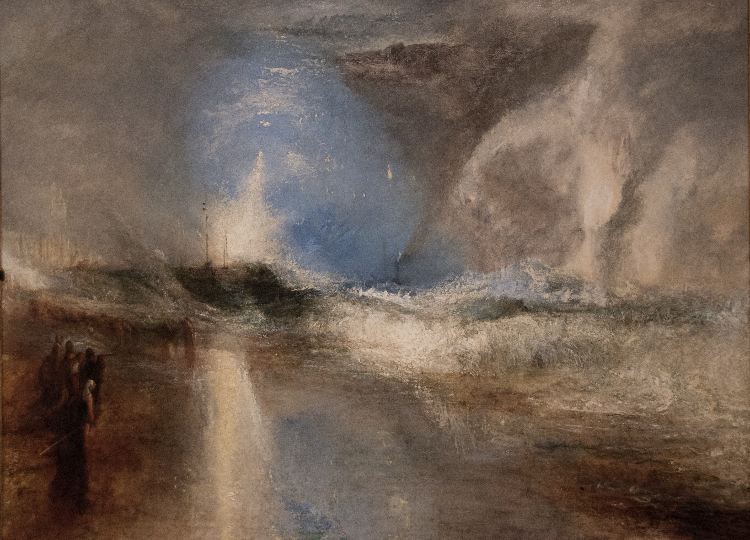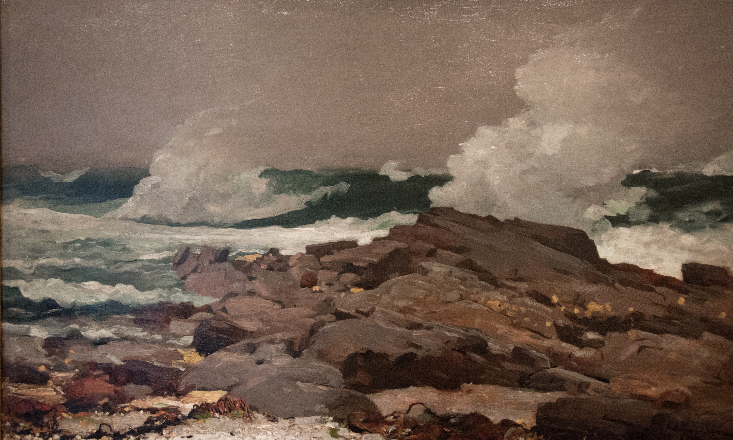

I never know what part of a show is going to resonate with me. In this case it was not really the show itself but a comparison between Turner’s painting, Rockets and Blue Lights, which is in the show and several Winslow Homer paintings in the museum’s permanent collection. The paintings are all ocean scenes with waves crashing on a beach.
As an artist who has always appreciated Homer, I was surprised how flat and stylized his waves are when compared with Turner’s energy packed monsters. Turner’s personalized painting style, despite looking very chaotic at first glance, really does convey the strength of nature. The more I investigated the Turner painting, the more powerful it became. Turner really gets to the soul of nature, whereas Homer is showing us what it looks like.
The show itself had quite a few Constable oil studies as well as drawings, all of which were worth seeing. Turner was not as well represented. Most numerous were his small, tight, watercolors done as illustrations for various publications – not at all what one thinks of in connection with Turner, but I always appreciate being reminded of all someone’s facets. Rockets and Blue Lights was Turner’s only large canvas.
There were two other, smaller, oil paintings. One was a beach scene in Turner’s exuberant style, while the other, a bridge, was in his tight illustration style. These two show the advantage of learning a skill and then applying it where one wants. The show included numerous watercolors that were not in his tight, illustration style, but none that gave off much in the way of energy.
Rockets and Blue Lights rewarded me for taking the time to stand in front of it. No ocean ever looked like what Turner painted, however, it did feel like nature displaying all its might. In the painting Turner’s figures are, both literally and figuratively, almost engulfed by the raging sea. The primary function of figures in a landscape painting is to give scale and Turner’s figures are a prime example of this.
